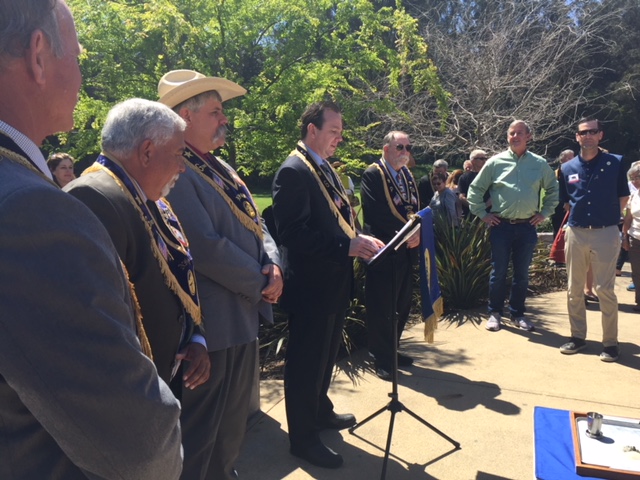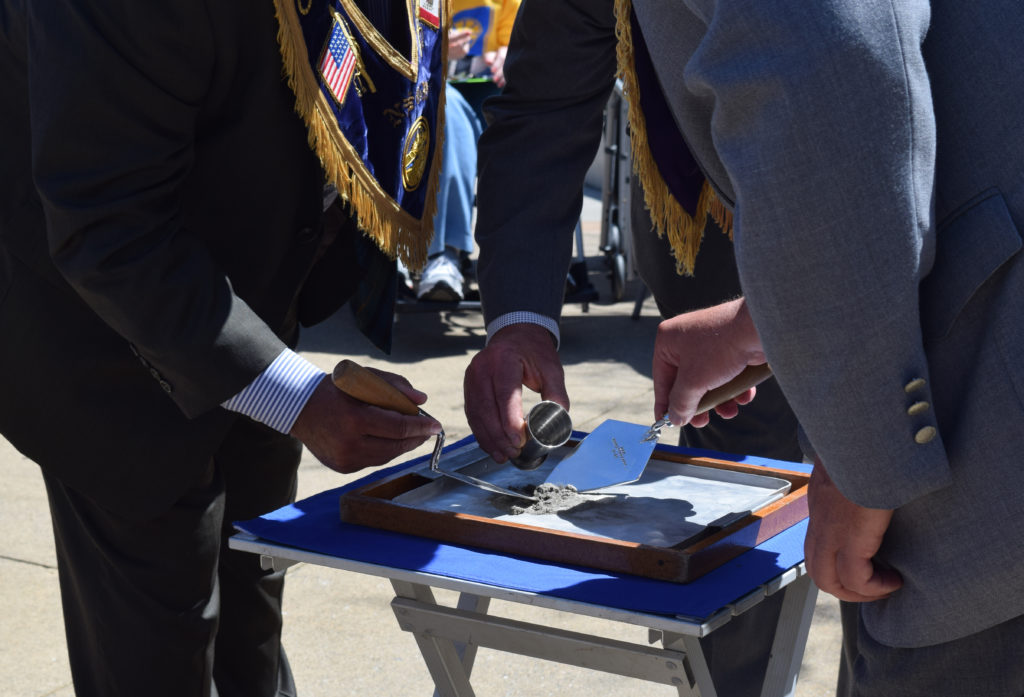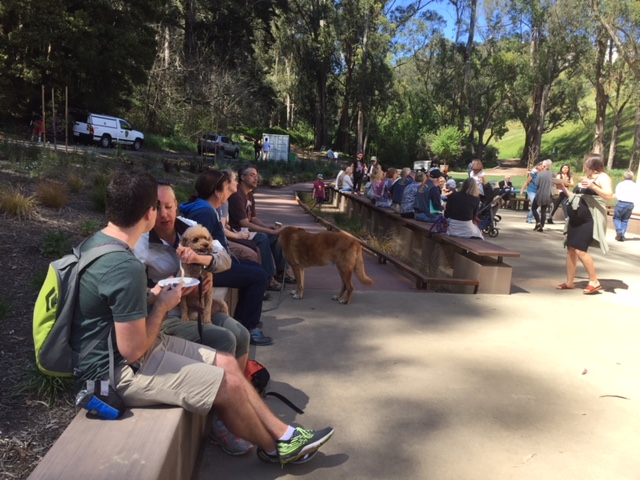By Bonnee Waldstein with thanks to Evelyn Rose and Susan Sutton
It took almost three decades, but Glen Canyon Park now has the distinction of having an official California historical landmark plaque, prominently displayed at the park entrance.
The park wasn’t always a place where children would imagine their own world in a wooden playhouse, where joggers would spend Sundays getting their heart rate up on the trails, or where dogs would romp and twirl themselves into pretzels in the grass.
In its early days, the park functioned as a dairy. Later, developers lured folks out with various amusements, such as a zoo, a bowling alley, and a dance hall. Lo and behold, in 1868, a dynamite factory, the Giant Powder Company, found a home there too.
Alfred Nobel, the inventor of dynamite, chose a site in Glen Canyon Park (likely behind the current recreation center) to situate the first dynamite factory in the United States. Eighteen months later, the factory mysteriously blew up, killing two and severely injuring several workers.
The explosion was heard downtown and windows were blown out a mile away. After a similar fate later, when the factory had relocated to the San Francisco sand dunes and then to Pt. Pinole, dynamite factories were no longer welcome near populated neighborhoods.
There was a positive side to this sad history: Nobel, leaving no heirs, and having made a fortune with his invention of dynamite, bequeathed it toward establishing what we now know as the Nobel Prize. To this day, the Nobel is the ultimate reward for excellence in science, humanities, and the arts.
Jean Kortum, a visionary civic activist, local historian and environmentalist, spearheaded the designation of Glen Canyon Park as the site of a historical landmark to commemorate its link to Alfred Nobel and his discovery of dynamite. On May 3, 1991, the state declared the area a landmark.
However, it wasn’t until eleven years ago that the Glen Park Neighborhoods History Project (GPNHP), founded and directed by Evelyn Rose, set about to have an official historical plaque funded, fabricated and placed in the park. The Recreation and Parks Department approved the placement of an historic plaque in August 2017.
Saturday, April 21 was the culmination and celebration of this effort, with the unveiling of the plaque. The occasion was marked with an historical review by Evelyn Rose; remarks by local dignitaries; and a traditional dedication ceremony by representatives of the Grand Parlor of he Native Sons of the Golden West, who were major supporters of the project, along with San Francisco Recreation and Parks Department, donors, and members of the GPNHP.
John Kortum, Jean’s son, observed at the ceremony: “I doubt my mother would’ve ever dreamed of being publicly recognized for this. Her comfort zone was in the shadows. My mother only started the project. Evelyn Rose and the Glen Park Neighborhoods History Project made it happen.”
It was capped off with a celebration of cake and sunshine in the picnic area outside the Rec Center.
To learn about all the fascinating details of this chapter of Glen Park history, go to the GPNHP website, to this page.






The plaque was made by the California Bell Company, the same company responsible for the historical markers along the original El Camino Real. One of the Native Sons remarked, upon seeing it, “By far, this is the best construction of a plaque we have ever seen!”

Far left to right:
Amy O’Hair, Assistant Project Director, Glen Park Neighborhoods History Project;
David Allen, Chairman, Historical Preservation Foundation, Native Sons of the Golden West (Auburn Parlor No. 59, Auburn); Kristen Arkush, daughter of the late Geri Arkush, Glen Park Gum Tree Girl*; [far back, behind Kristen Arkush in cowboy hat] James King, Grand First Vice President, NSGW (San Miguel Parlor No. 150, San Miguel); [far back] Ron Brocco, Grand Third Vice President, NSGW (Sonoma Parlor No. 111, Sonoma): John Kortum, son of Jean Kortum; Arianna Tatiana Kortum, granddaughter of Jean Kortum; Alexandra Rudrashevska, wife of John Kortum; [far back] Erik Christeson, Grand Junior Past President, NSGW (Excelsior Parlor No. 31, Jackson); Kevin McCollom, NSGW (Twin Peaks Parlor No. 214, San Francisco); Jeffry Schaadt, NSGW (Twin Peaks Parlor No. 214, San Francisco); Zoanne Nordstrom, Glen Park Gum Tree Girl* California State Senator Scott Wiener Joan Seiwald, Glen Park Gum Tree Girl* San Francisco District 8 Supervisor Jeff Sheehy Marcus Theriault (son of Zoanne Nordstrom) Evelyn Rose, Project Director and Founder, Glen Park Neighborhoods History Project
(*For the story of the Gum Tree Girls and the Freeway Revolt of the 1960s, click here. Supervisor Sheehy said of their saving the park from being destroyed by a freeway, “This is such a treasure, and it wouldn’t be here without [them].”


Photo: Susan Sutton
In part of the ceremony, the Native Sons of the Golden West describe from which part of the state the sand and gravel, cement, and water originated. The elements are then bound together, representing the existence of a perfect state, and applied to one corner of the plaque to “seal” it.

The plaque reads:
THE FIRST DYNAMITE FACTORY IN AMERICA
Giant Powder Company, under personal license of inventor Alfred Nobel, began producing dynamite here on March 19, 1868. On November 26, 1869, a massive explosion leveled the complex’s buildings and fences. Giant Powder soon resumed operations in West San Francisco, and moved to its final site at Pt. Pinole in 1892. A a pioneer company, Giant Powder was so influential that “Giant” became synonymous with “Dynamite,” a vital ingredient for California’s early development.
CALIFORNIA REGISTERED HISTORICAL LANDMARK NO. 1002
Historic site designated May 3, 1991. Plaque placement approved August 17, 2017 as a result of a collaborative effort by The Glen Park Neighborhoods History Project, Twin Peaks Parlor No. 214 of the Native Sons of the Golden West, The Historical Preservation Foundation of the Native Sons of the Golden West, and San Francisco Recreation and Parks.

